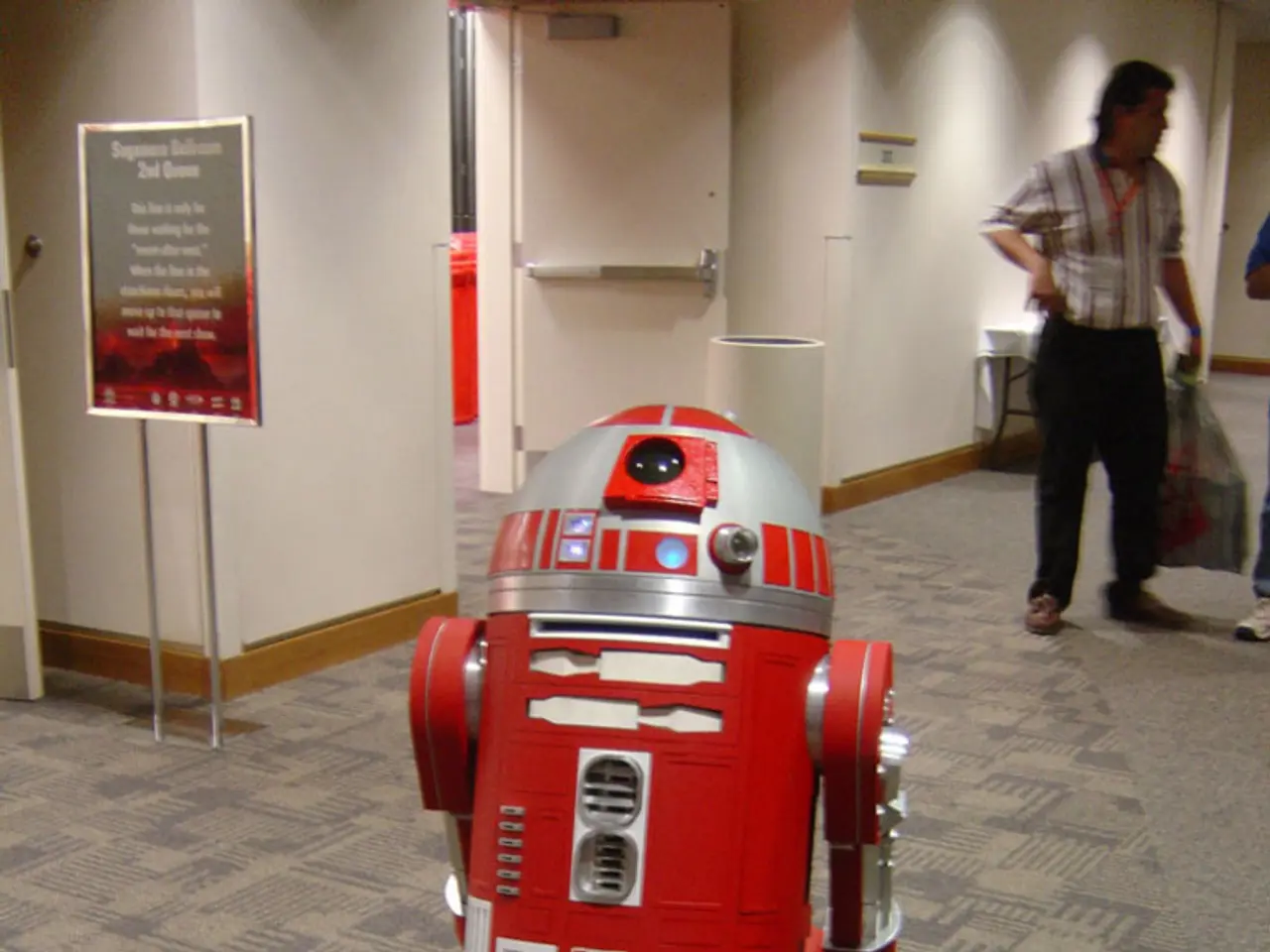Workers at the latest restaurant establishment refuse to complain about minimal wages and no time off, despite the circumstances.
Automation Takes Center Stage: The Rise of Serving Robots in Restaurants
In a notable development, a serving robot named Lutzi has made its debut at the XXXLutz restaurant in Wolfratshausen, marking a significant shift in the hospitality industry. Lutzi, equipped with a computer voice, greets customers and politely requests them to take their plates, bringing a touch of futuristic charm to dining experiences.
Initially, the 14 restaurant and kitchen staff met Lutzi with skepticism. However, as the robot has proven to be a relief for the team, the initial apprehension has gradually subsided. Lutzi's automated services have allowed human staff to focus more on personalized guest interactions, boosting productivity by about 25%.
Lutzi is not alone in this automation revolution. Restaurants across the globe are integrating robots into their operations, from food delivery to kitchen tasks. For instance, humanoid robots at Tesla's Hollywood diner glide between tables, delivering organic burgers and breakfast tacos, while robotic servers at Kura Sushi use conveyor-belt systems to deliver drinks and specialty orders.
Moreover, companies like Chipotle have introduced Autocado, a specialized robot designed for food preparation, cutting, coring, and peeling avocados for guacamole. Meanwhile, delivery robots from companies like Serve Robotics and Sweetfin are revolutionizing last-mile delivery, improving efficiency while reducing costs and environmental impact.
Each of these robots serves a unique purpose and operates in different environments. Lutzi-like serving robots, for example, are designed for autonomous movement and delivery within restaurants, while delivery robots are designed for sidewalk or curbside delivery. Kitchen robots, like Autocado, are fully autonomous in their tasks, automating specialized prep tasks and reducing kitchen labor.
The integration of these robots has both positive and transformative effects on employment. Many restaurants deploy robots to address labor shortages and rising costs without sacrificing customer experience. Robots increase server productivity, allowing human staff to devote more time to personalized service. However, this shift in human roles from manual delivery to oversight of robotic systems indicates job transformation more than outright job loss at this stage.
Delivery robots may replace some courier roles, especially for short-range deliveries. However, current technological and geographic limitations mean human jobs are not entirely displaced. Industry insiders emphasize automation, especially in fast food and fast-casual segments, where speed and cost efficiency are critical. This implies that future employment may increasingly require tech management skills alongside traditional hospitality.
Lutzi, with her sensors that allow her to recognize obstacles and stop immediately, and her ability to handle up to 40 kilograms, is a testament to the potential of serving robots. Programmed to work 24 hours a day, 365 days a year, Lutzi's movements are guided by data transferred to her memory chip, which includes the location of all tables in the 120 square meter restaurant.
In a charming touch, if a customer celebrating a birthday has stored their personal data with the furniture giant, Lutzi sings a little tune. Despite her mechanical nature, Lutzi's movements are reminiscent of a lawn mower robot, and she even makes sounds similar to a cat when stroked.
The addition of Lutzi allows for the simultaneous serving of significantly more tables in a system catering establishment, reducing waiting times for guests. As Lutzi is the first serving robot of its kind in the district, it is clear that this is just the beginning of a new era in the hospitality industry.
[1] Tesla's Humanoid Robots Serve Food at Hollywood Diner
[2] Robots Take Over the Kitchen: The Rise of Automation in Food Preparation
[3] Delivery Robots: The Future of Last-Mile Delivery
[4] The Impact of Delivery Robots on Employment
[1] In line with the automation revolution, Tesla's humanoid robots also find a place in the dining industry, serving food at the Hollywood diner.
[2] Beyond serving, robots are proving their utility in food preparation, as seen with the introduction of specialized robots like Autocado at certain restaurants, automating prep tasks in the kitchen.




